| Weight | 1 lbs |
|---|---|
| Dimensions | 9 × 5 × 2 in |
| host | mouse |
| isotype | IgG |
| clonality | monoclonal |
| concentration | concentrate, predilute |
| applications | IHC |
| reactivity | human |
| available size | 0.1 mL, 0.5 mL, 1 mL concentrated, 7 mL prediluted |
rabbit anti-FoxP1 monoclonal antibody (ZR333) 6185
Price range: $160.00 through $528.00
Antibody summary
- Rabbit monoclonal to FoxP1
- Suitable for: Immunohistochemistry (formalin-fixed, paraffin-embedded tissues)
- Reacts with: Human
- Isotype:IgG
- Control: Tonsil
- Visualization: Nuclear
- 0.1, 0.5, 1.0 mL concentrated, 7 mL prediluted
rabbit anti-FoxP1 monoclonal antibody ZR333 6185
| target relevance |
|---|
| Protein names Forkhead box protein P1 (Mac-1-regulated forkhead) (MFH) |
| Gene names FOXP1,FOXP1 HSPC215 |
| Mass 75317Da |
| Function FUNCTION: Transcriptional repressor (PubMed:18347093, PubMed:26647308). Can act with CTBP1 to synergistically repress transcription but CTPBP1 is not essential (By similarity). Plays an important role in the specification and differentiation of lung epithelium. Acts cooperatively with FOXP4 to regulate lung secretory epithelial cell fate and regeneration by restricting the goblet cell lineage program; the function may involve regulation of AGR2. Essential transcriptional regulator of B-cell development. Involved in regulation of cardiac muscle cell proliferation. Involved in the columnar organization of spinal motor neurons. Promotes the formation of the lateral motor neuron column (LMC) and the preganglionic motor column (PGC) and is required for respective appropriate motor axon projections. The segment-appropriate generation of spinal cord motor columns requires cooperation with other Hox proteins. Can regulate PITX3 promoter activity; may promote midbrain identity in embryonic stem cell-derived dopamine neurons by regulating PITX3. Negatively regulates the differentiation of T follicular helper cells T(FH)s. Involved in maintenance of hair follicle stem cell quiescence; the function probably involves regulation of FGF18 (By similarity). Represses transcription of various pro-apoptotic genes and cooperates with NF-kappa B-signaling in promoting B-cell expansion by inhibition of caspase-dependent apoptosis (PubMed:25267198). Binds to CSF1R promoter elements and is involved in regulation of monocyte differentiation and macrophage functions; repression of CSF1R in monocytes seems to involve NCOR2 as corepressor (PubMed:15286807, PubMed:18347093, PubMed:18799727). Involved in endothelial cell proliferation, tube formation and migration indicative for a role in angiogenesis; the role in neovascularization seems to implicate suppression of SEMA5B (PubMed:24023716). Can negatively regulate androgen receptor signaling (PubMed:18640093). Acts as a transcriptional activator of the FBXL7 promoter; this activity is regulated by AURKA (PubMed:28218735). {ECO:0000250|UniProtKB:P58462, ECO:0000269|PubMed:15286807, ECO:0000269|PubMed:18640093, ECO:0000269|PubMed:18799727, ECO:0000269|PubMed:24023716, ECO:0000269|PubMed:25267198, ECO:0000269|PubMed:26647308, ECO:0000269|PubMed:28218735, ECO:0000305|PubMed:18347093, ECO:0000305|PubMed:24023716}.; FUNCTION: [Isoform 8]: Involved in transcriptional regulation in embryonic stem cells (ESCs). Stimulates expression of transcription factors that are required for pluripotency and decreases expression of differentiation-associated genes. Has distinct DNA-binding specifities as compared to the canonical form and preferentially binds DNA with the sequence 5'-CGATACAA-3' (or closely related sequences) (PubMed:21924763). Promotes ESC self-renewal and pluripotency (By similarity). {ECO:0000250|UniProtKB:P58462, ECO:0000269|PubMed:21924763}. |
| Subellular location SUBCELLULAR LOCATION: Nucleus {ECO:0000269|PubMed:25027557, ECO:0000269|PubMed:26647308}. Note=Not found in the nucleolus. {ECO:0000269|PubMed:26647308}. |
| Tissues TISSUE SPECIFICITY: Isoform 8 is specifically expressed in embryonic stem cells. {ECO:0000269|PubMed:21924763}. |
| Structure SUBUNIT: Forms homodimers and heterodimers with FOXP2 and FOXP4 (PubMed:25027557). Dimerization is required for DNA-binding. Self-associates (PubMed:26647308). Interacts with CTBP1 (By similarity). Interacts with NCOR2 and AR (PubMed:18347093, PubMed:18640093). Interacts with FOXP2 (PubMed:26647308). Interacts with TBR1 (PubMed:30250039). Interacts with AURKA; this interaction facilitates the phosphorylation of FOXP1, which suppresses the expression of FBXL7 (PubMed:28218735). Interacts with ZMYM2 (PubMed:32891193). {ECO:0000250|UniProtKB:P58462, ECO:0000269|PubMed:18347093, ECO:0000269|PubMed:18640093, ECO:0000269|PubMed:25027557, ECO:0000269|PubMed:26647308, ECO:0000269|PubMed:28218735, ECO:0000269|PubMed:30250039, ECO:0000269|PubMed:32891193}. |
| Domain DOMAIN: The leucine-zipper is required for dimerization and transcriptional repression. {ECO:0000250|UniProtKB:P58462}. |
| Involvement in disease DISEASE: Note=A chromosomal aberration involving FOXP1 is found in acute lymphoblastic leukemia. Translocation t(9;3)(p13;p14.1) with PAX5.; DISEASE: Intellectual developmental disorder with language impairment and with or without autistic features (IDDLA) [MIM:613670]: A developmental disorder characterized by mild to moderate intellectual disability, language impairment, and autistic features in some patients. Patients show global delay, delayed walking, severely delayed speech development, and behavioral abnormalities, including irritability, hyperactivity, aggression, and stereotypical rigid behaviors. {ECO:0000269|PubMed:20848658, ECO:0000269|PubMed:20950788, ECO:0000269|PubMed:26647308, ECO:0000269|PubMed:29463886}. Note=The disease is caused by variants affecting the gene represented in this entry. |
| Target Relevance information above includes information from UniProt accession: Q9H334 |
| The UniProt Consortium |
Data
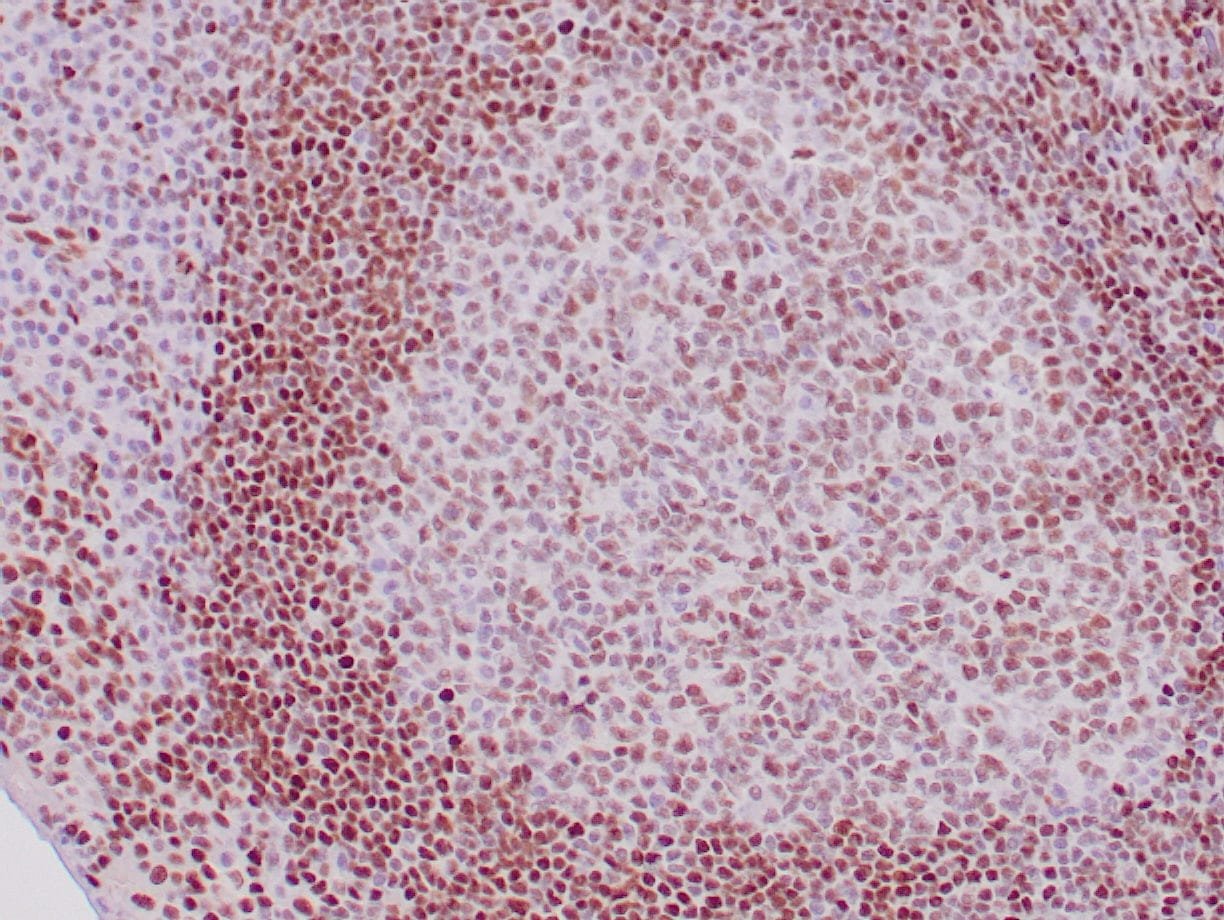 |
| Human tonsil stained with anti-FoxP1 antibody using peroxidase-conjugate and DAB chromogen. Note the nuclear staining of follicular and mantle B-cells. |
Publications
| pmid | title | authors | citation |
|---|---|---|---|
| We haven't added any publications to our database yet. | |||
Protocols
| relevant to this product |
|---|
| IHC |
Documents
| # | SDS | Certificate | |
|---|---|---|---|
| Please enter your product and batch number here to retrieve product datasheet, SDS, and QC information. | |||
Only logged in customers who have purchased this product may leave a review.

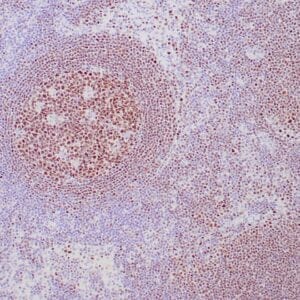

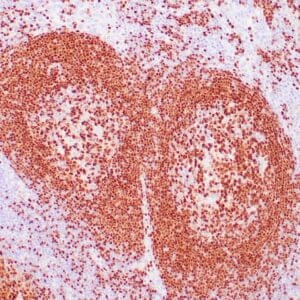
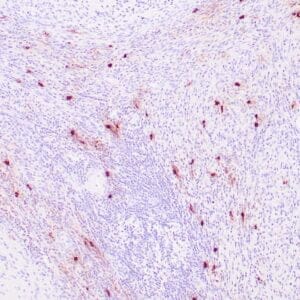
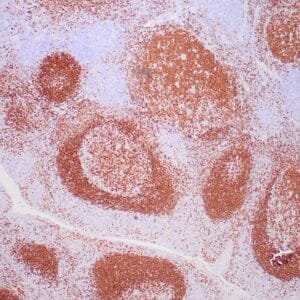


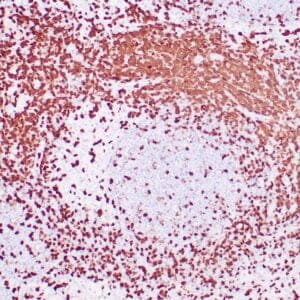

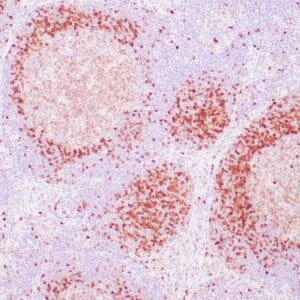

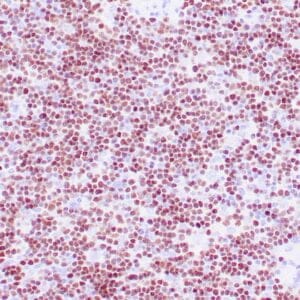
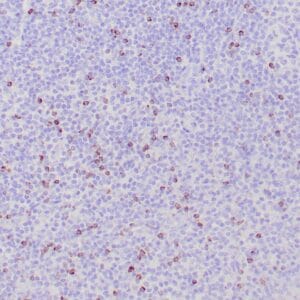
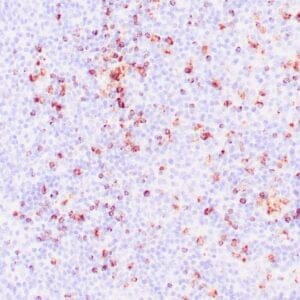
Reviews
There are no reviews yet.